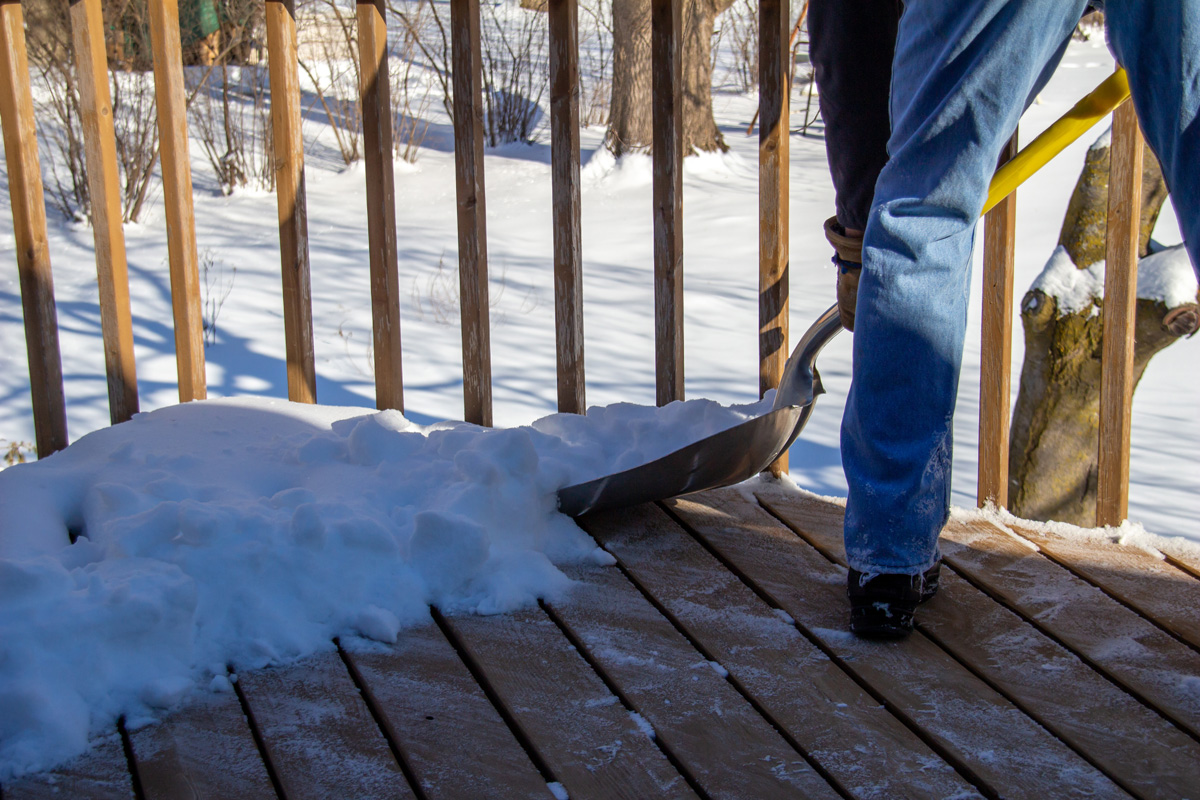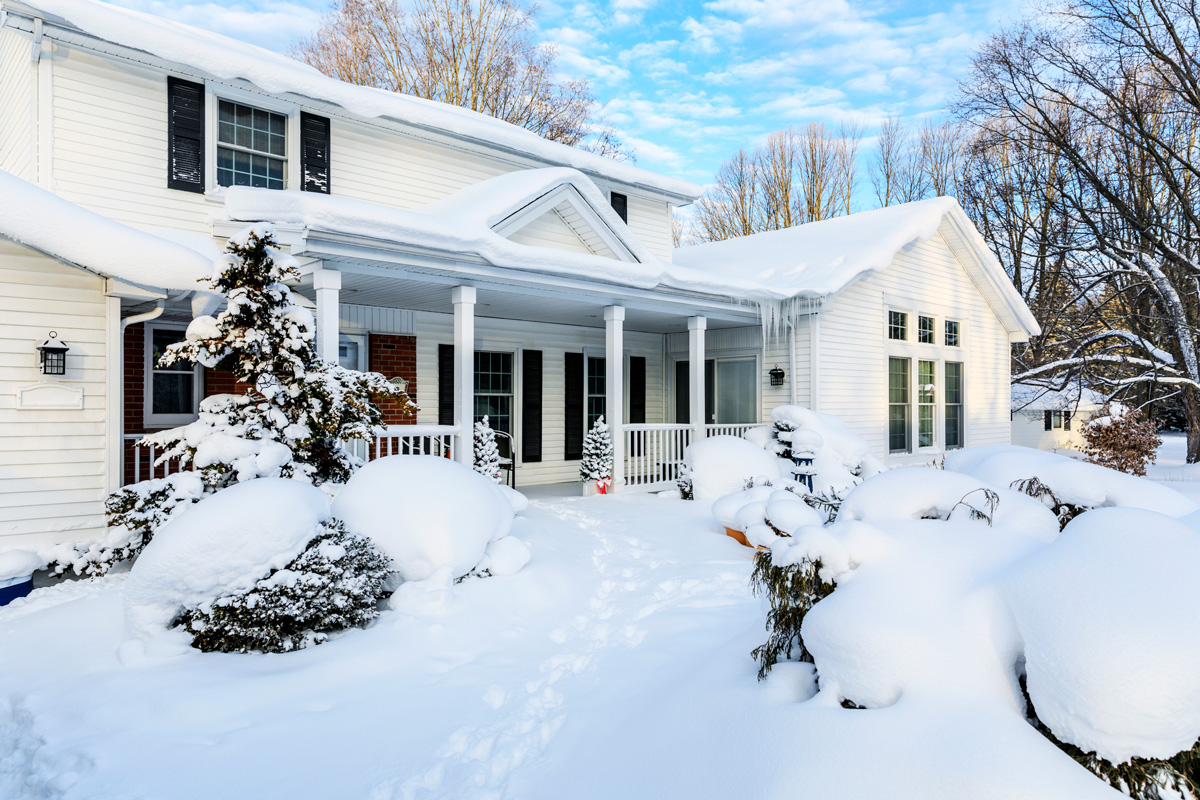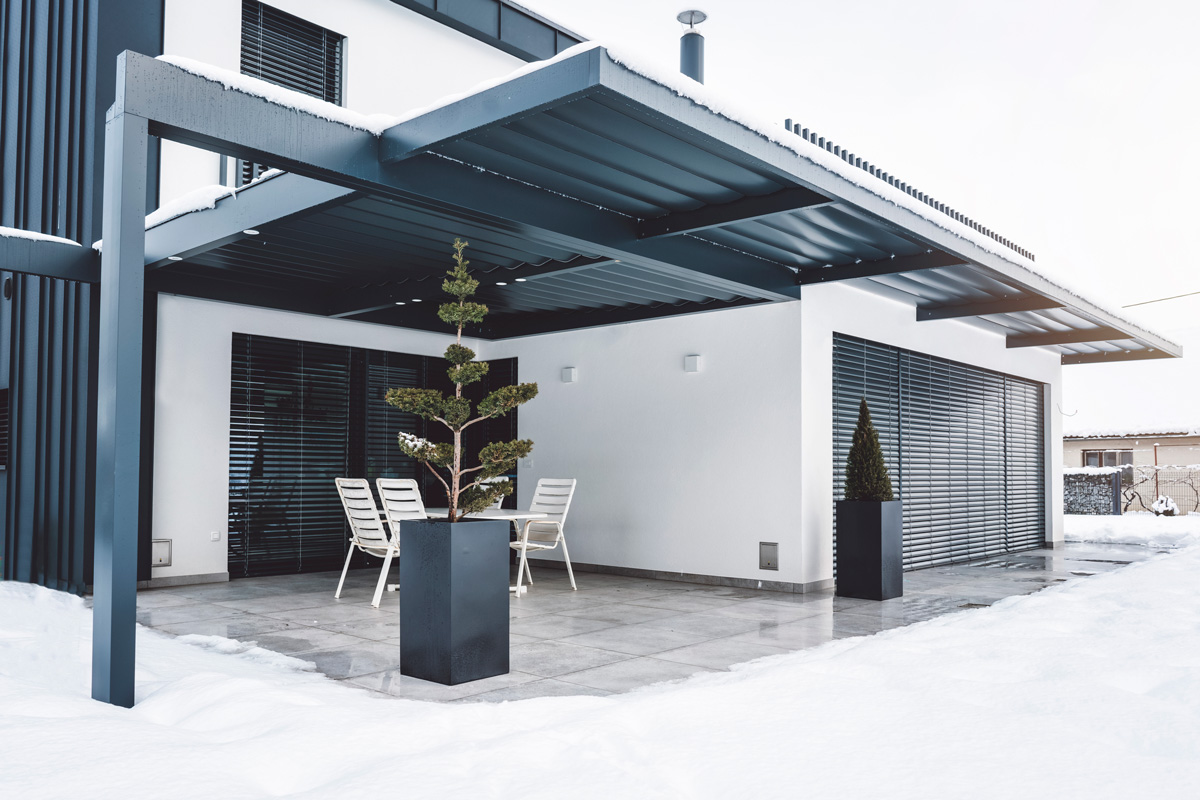Snow is a nuisance in most instances. It's a headache to clean up, and it can worsen the condition of many materials. One area that snow raises concern in is the deck. Should you shovel it off of there? If that's your concern, let's go over the details.
In most cases, it doesn't matter if you leave snow on the deck. Decking materials can withstand the weight. However, you should shovel it if it exceeds the height of the railing. You should also remove it if you need a safe exit path.
If you decide to remove the snow off the deck, you'll need to be careful with how you do it. After all, you wouldn't want to damage the material. We'll go over some precautions to consider. There are other concerns you might have that we'll also address. To learn more, keep reading.
![Snow covered deck of a house with white railing and wood planks, Should You Shovel Your Deck? [And How To]](https://homedecorbliss.com/wp-content/uploads/2022/07/Should-You-Shovel-Your-Deck-And-How-To.jpg)
Dealing With Snow on Decks

We may include affiliate links and curated AI content to highlight top design styles.
Although decking material can withstand the weight of snow, there are still more concerns to consider. One that comes to mind is water damage. Snow won't stay solid forever. It's going to drip along the bottom once it starts getting warmer.
Should that be alarming? That depends on the material. As long as you keep up with maintenance, they should all be water-resistant and rot-proof in some capacity.
Composite, aluminum, and PVC decking are the most weather resistant. So, there should not be any worry about water damage to these materials. As mentioned, as long as you keep up with maintenance, there should not be any worry about water damage to wood decking material.
Therefore, if you don't feel like shoveling snow off the deck, you are justified in doing so! The decking material has enough protection against weather that water damage nor the weight is a concern. You could wait it out.
When Should You Shovel Snow of the Deck?

Of course, the weather is unpredictable. Snow becomes a concern when there's too much of it. Regarding decks, it's recommendable to shovel them if the snow depth goes above the deck rails.
At that point, it's creating a hazardous environment. It can be dangerous to access the deck if you don't have sight of the railing. The weight of the snow becomes concerning when it reaches around three feet high.
Another instance where you should shovel the snow is if you need a safe pathway. For example, if the deck is near an entryway, you could clear a three-foot-wide path. It's enough clearance to let you see the handrails and the stairs below, if any.
If you own an outdoor grill, you should clear a path in that area. This way, you are following along with good fire safety practices.
How To Clear Snow Off of Deck

If you decide to shovel the deck, there's a correct way to do it and a wrong way. Maybe the snow hasn't piled up yet. So, it might seem like a good idea to spread salt on the deck.
It's how you prevent snow buildup on sidewalks, driveways, etc. However, it's too damaging to decking material. Rock salt is terrible on metal and wood decking. It's corrosive and a powerful dehydrator.
At worst, it will leave the material stained and in worse condition. It would be better to avoid using any materials that will dehydrate wood or metal. Sand is also corrosive. So, it's best to avoid using it too.
Spreading rock salt over an existing layer of snow is also unadvisable. It creates uneven surfaces. In addition, it still has the potential to damage the board material. Unfortunately, clearing the deck will involve some manual labor.
Here's a YouTube video explaining it further:
Removing the Snow
You could use any shovel to clear the deck when there's too much snow. However, as you start reaching the surface of the decking, switch to a plastic shovel. Plastic is less aggressive than metal.
Click here to see this snow shovel on Amazon.
A metal shovel can be sturdy enough to gouge out sections. In a similar thought, avoid shoveling perpendicular to the boards. In other words, don't shovel straight down.
Instead, try shoveling parallel to the decking boards. It's the best way to avoid scraping the board material. Once it becomes hard to remove with a shovel, you can use a broom to remove the rest.
A Quick Way To Remove Snow
If the snow isn't too wet, you could also attempt to remove it using a leaf blower. This method is messy, but it's a fast way. The downside to using a leaf blower is the energy you use to power it.
Of course, some people won't mind the cost if it cuts down the labor involved. So, it's worth a try. Here's a YouTube video demonstrating how effective it can be:
Removing Ice
The problem with winters is the ice that forms on the surfaces we walk on. It's a pain to remove. Homeowners would have to use a metal scraper to remove it efficiently.
However, as we've learned, that isn't a good idea with decking materials. Ice scrapers are sharp enough to leave the deck in worse shape. So, you'd have to rely on ice-melting agents.
In other words, you would have to look for a pet-safe chemical ice remover. Still, be cautious with the one you decide to use. Some chemicals can damage or stain the boards. Lye and chlorine are two that do this.
Disadvantages of Using Ice Melters
The problem with this solution is that results vary. Some deicers will not work. In addition, those that do might work too effectively. More specifically, there's a chance that it can remove the ice. But, it will leave the boards worse for wear.
So, if you can, it might be better to wait it out. Let warm weather melt the ice for you. Of course, that's unless you must clean the area. Make sure to research what chemicals work best for your decking material.
How To Prepare the Deck for the Winter

In the future, it's better to practice preventative measures. Preparing the deck for winter helps keep it in the best shape possible. The best time to prepare would be in the fall.
You can start by removing any dirt and debris that accumulates on the surface. As you are cleaning, check for any signs of mildew. If there's any, use an appropriate cleaner to remove it.
Some cleaners are not safe for the environment. You have to keep nearby vegetation and trees in mind when choosing one. Once you have ensured the deck is in good condition, apply a seal and finish.
That's if you own a wooden deck. You could also cover the surface with a tarp. Cover any furniture that you will not use during the winter. Otherwise, move those items into a shed or garage.
Secure the tarp to prevent air from blowing it away. Additionally, keep an eye on the snow depth. Sweep the deck with a broom to control the amount of snow buildup.
What Can You Put On The Deck To Melt Ice?
As mentioned, you'll have to research the appropriate chemicals to use on the decking material to melt ice. If you choose the wrong one, it can damage the board material. So, you might want more details on choosing one.
If your deck uses maintenance-free materials, you can use sodium chloride-based rock salt or ice melt with calcium chloride. PVC vinyl and composite decking fall in the maintenance-free category.
Click here to see this ice melter on Amazon.
You need to be picky when you're melting ice on a wood decking board. Rock salt and calcium chloride can easily damage the wood. Look for a deicer that is wood-friendly.
Click here to see this ice melter on Amazon.
Preventing Ice Buildup
Since chemical ice removers are often unreliable, it would be best to prevent ice from building up. You can do that by applying a thin layer of cat litter. Cat litter is easy to sweep off and rinse away once the winter season is over.
What Can You Do To Prevent A Slippery Deck?

Ice isn't the only formation that causes a slippery surface. The deck is constantly exposed to the outside. Therefore, other things are allowed to grow on the surface.
Moisture provides an environment that promotes growth for many organisms. Algae, moss, and much more can grow on decking material. If you see it, remove it.
Of course, moisture isn't the only requirement for growth. Organisms need a food source. Leaves and other debris provide that. For this reason, it's good practice to clean it routinely.
Aside from that, you could also lay down rubber mats or a tarp to prevent the deck from becoming slippery.
In Closing
How relieved are you that you don't have to shovel snow off your deck? It saves us effort if we can wait it out. However, it's good to clear it out if you need the area. In any case, we hope you found this informative.
Before you go, do you have other deck concerns? If you own a wooden one, it requires more maintenance. Staining is one thing you'll have to do. To learn more, check out:
How Often Should You Stain The Deck?
Do you have a footprint problem on the deck? We can help you find ways to remove them. For more information, check out:






